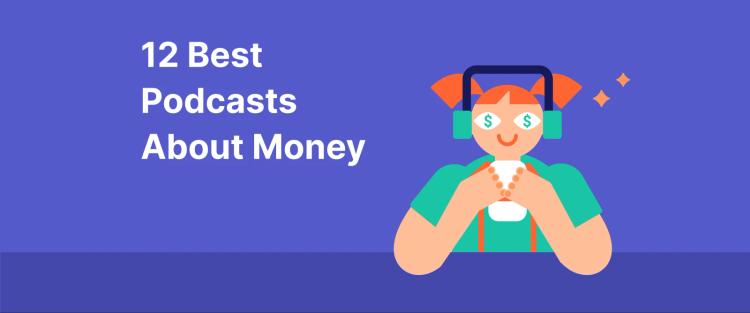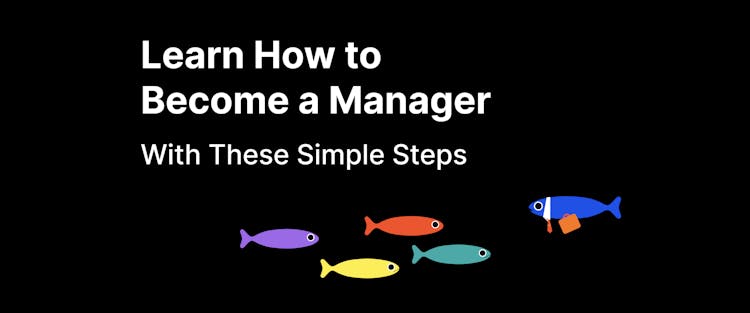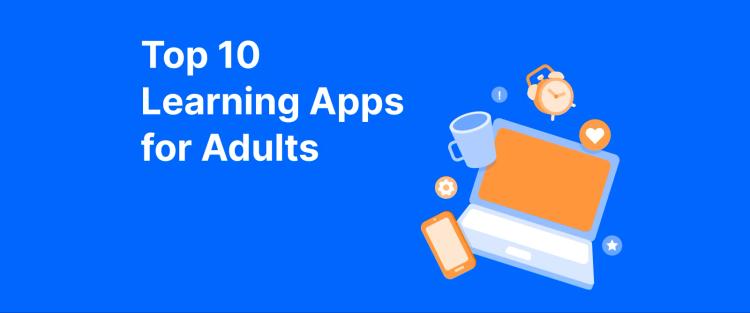The question of how to learn quickly is one of the most pressing matters of the modern digital age. According to Marcel V. J. Veenman's research on metacognition, how fast and effectively a person learns depends more on their ability to independently develop and utilize effective study methods rather than solely on their intellectual skillset.
In this article, the Headway Team has gathered some of the most effective techniques to illuminate the enigmatic subject of rapid learning that you can use to design your own unique "quick learning strategy."
Learning quickly is a sign of the times
The key to success in today's rapidly changing world is encoded in one question: how to learn quickly and use it to boost your adaptation skills. Those who can keep up and embrace change have a significant advantage. Learning something new can provide a fresh perspective on familiar concepts and enable us to apply them innovatively.
Adjusting yourself to the "speed test" that the times dictate is crucial. This means being ready to give up old habits and embrace new, more effective learning techniques. As Peter C. Brown, Mark A. McDaniel, and Henry L. Roediger III point out in 'Make It Stick: The Science of Successful Learning,' traditional methods like re-reading, underlining, or cramming for a test only give an illusion of knowing:
"Rereading has three strikes against it. It is time-consuming. It doesn’t result in durable memory. And it often involves a kind of unwitting self-deception, as growing familiarity with the text comes to feel like mastery of the content. The hours immersed in rereading can seem like due diligence, but the amount of study time is no measure of mastery."
This article explores how to recast illusory learning techniques into actual, practical, and relevant learning techniques. With these, you’ll be able to master new skills quickly and retain knowledge for years.
Neuroplasticity is the secret behind remastering the learning skills of the brain
Exploring the immense capabilities of our minds is a fascinating and empowering journey. Recent advancements in neuroscience, particularly highlighted in Dr. Caroline Leaf's 'Switch On Your Brain' and Joshua Foer's 'Moonwalking with Einstein,' have shed light on the remarkable phenomenon of neuroplasticity:
"We are not victims of our biology. We are co-creators of our destiny alongside God. God leads, but we have to choose to let God lead. We have been designed to create thoughts, and from these we live out our lives (Prov. 23:7)."
"The brain best remembers things that are repeated, rhythmic, rhyming, structured, and above all easily visualized."
Dr. Leaf proves that by actively engaging our subconscious mind through deliberate and purposeful deep thinking, we have the ability to shape our thoughts into positive and impactful outcomes when they surface in our conscious awareness:
"Our choices — the natural consequences of our thoughts and imagination — get 'under the skin' of our DNA and can turn certain genes on and off, changing the structure of the neurons in our brains. So our thoughts, imagination, and choices can change the structure and function of our brains on every level."
This understanding instills optimism by demonstrating the remarkable adaptability and malleability of our brains, far beyond what was conventionally believed.
Essential skills to start learning quickly
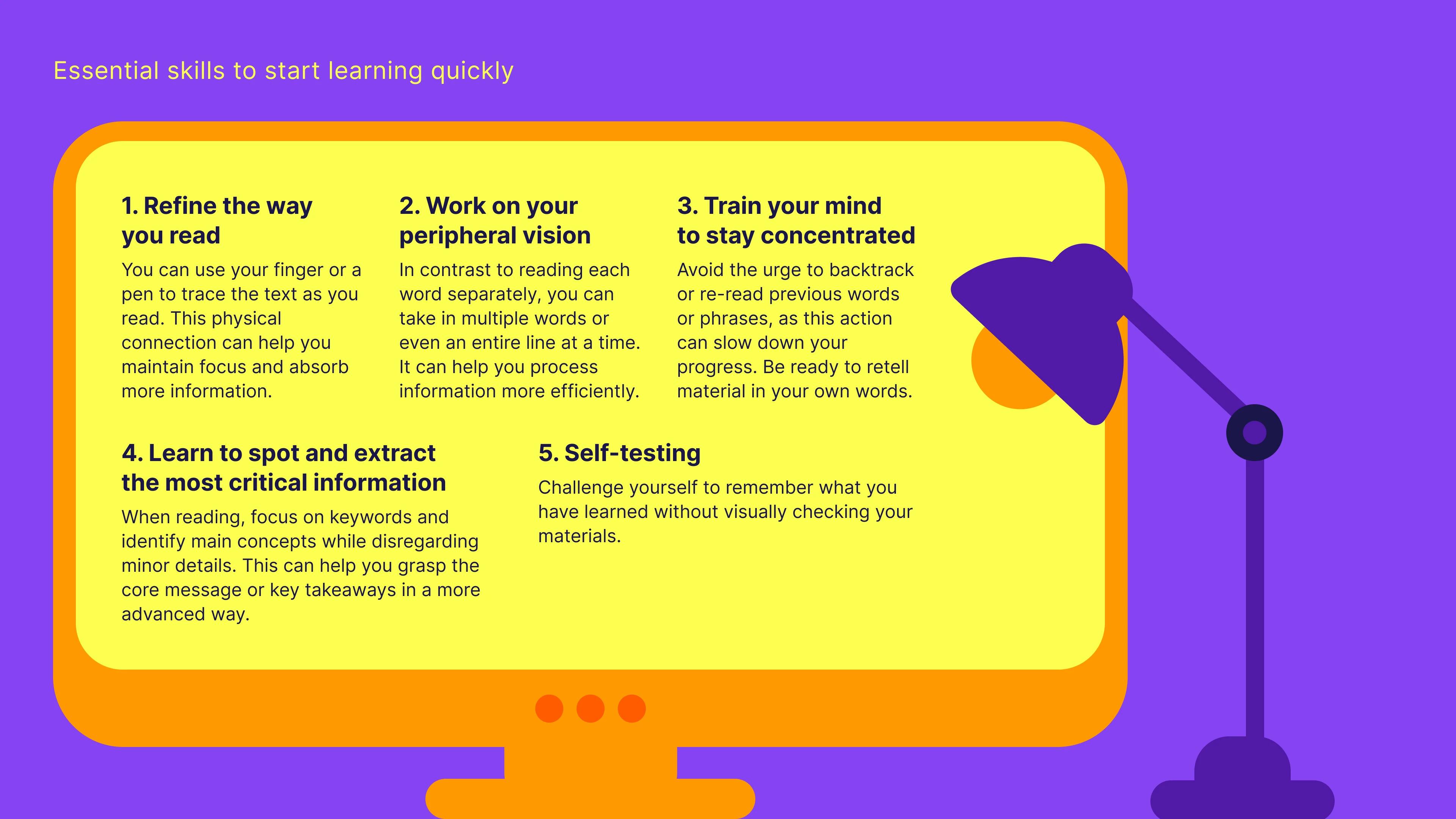
Neuroplasticity has given us an exciting opportunity to improve our study techniques and adapt over a short-term period. There are several effective methods to enhance our brain's capacity to retain knowledge when dealing with a higher volume of information. Some of these methods include:
Refine the way you read: You can use your finger or a pen to trace the text as you read. This physical connection can help you maintain focus and absorb more information.
Work on your peripheral vision: In contrast to reading each word separately, you can take in multiple words or even an entire line at a time. It can help you process information more efficiently.
Train your mind to stay concentrated: Avoid the urge to backtrack or re-read previous words or phrases, as this action can slow down your progress. Be ready to retell material in your own words.
Learn to spot and extract the most critical information: When reading, focus on keywords and identify main concepts while disregarding minor details. This can help you grasp the core message or key takeaways in a more advanced way.
Self-testing: Challenge yourself to remember what you have learned without visually checking your materials.
The most effective ways to learn and memorize faster
To learn faster, you should start by working on your personal learning style, combining the techniques and advisory guidelines that best suit your personality. The first step to improving your learning skills is to practice linking different pieces of information together, as well as training yourself to have short breaks and get enough sleep. Well-trained study habits are also the best way to quickly learn new information for a test or presentation.
Here are some strategies that can assist in speeding up learning and memorizing processes:
Mnemonics: Mnemonic devices are a smarter way to learn anything completely new, especially language. It works by linking information to an easy-to-understand image or concept and engraving it on your long-term memory. For example, the Korean letter ㅂ, which sounds like English "b," could be visually represented by the word that looks like it and that starts from this very letter. Since ㅂ visually reminds us of a bucket and this word starts from the sound "b," the mnemonic card explaining this Korean letter will picture a bucket.
Spaced repetition: Consistently reviewing information at spaced intervals can facilitate easier recall. Online flashcards can be handy to deal with large amounts of information, sometimes of a higher academic level.
Physical exercise: Regular physical activity can positively impact memory and cognitive function, improving learning capabilities and enhancing memory retention.
Visualization: Generating clear mental images of the material and connecting them with visual representations can help retain information.
Chunking: Collecting small pieces of information into meaningful groups makes it easier to remember and recall them later. It's like creating mental shortcuts for better memory.
The art of note-taking

In today's tech-driven world, not all advancements are the best options for our learning and memory progress. Taking notes with a pen and paper instead of a laptop or phone may sometimes yield better results.
The following tips can help improve your time management and overall learning style through note-taking:
Remember to use structured notes: You can employ the "Cornell Method" (5 R's: Record, Reduce, Recite, Reflect, and Review) or the "Method of Mind Maps" (jot down a central point and brainstorm fresh ideas radiating out from the center). These methods will assist in organizing information logically and straightforwardly.
Underline and highlight: To accentuate important information, use colored markers to draw attention to fundamental details.
Summarize: Review the material covered as a way to reinforce what you've learned. This practice is essential for upgrading your understanding of the subject matter.
How to learn quickly and avoid burnout
When used smartly, all those learning techniques can add to our personal and professional development. However, to learn effectively, it's crucial to take regular breaks. Failing to do so can result in fatigue and decreased productivity.
Researchers at Louisiana State University advise:
Taking 1-2 minutes to set a goal.
Then, study new material for 30-50 minutes.
Take a break for 5-10 minutes.
Recap the learned points in 5 minutes.
After this cycle, they advise choosing between continuing studying, taking longer breaks, or switching subjects.
Smaller intervals may not be sufficient, while longer ones may be too taxing. Here are some techniques you can try:
Pomodoro Technique: Work in a deep-focus mode for 25 minutes, then pause for a 5-minute break. After four repetitions, consider a longer break (15-30 minutes).
Physical activity: Engage in any physical activity, such as stretching, walking, or quick exercise. This can help alleviate tension and improve information retention.
Change of activity: Switch to tasks unrelated to your primary work, such as reading a book or listening to music. This can provide mental refreshment.

Behavioral techniques
To study more in less time, start practicing mindfulness. This technique teaches us how to direct our attention with increased awareness, serving as an invaluable tool for improving focus and efficiently allocating time and energy. The following guidelines may help you hone mindfulness and other behavioral tools quickly.
The 5-minute rule to get you started
The five-minute rule offers a simple strategy when facing difficulty at the start. It suggests working on a task for just five minutes, after which you can choose to stop if you wish. Surprisingly, the motivation to continue often appears once the initial five minutes are over.
This technique addresses the everyday struggle of getting started with an activity.
The brain autopilot regime in case you get stuck
In 'How We Learn: The Surprising Truth About When, Where, and Why It Happens,' Benedict Carey challenges the traditional ways of learning and provides practical strategies to improve our learning capabilities. He offers valuable insights on maximizing our learning potential by delving into different learning methods, environments, and timing. One of the strategies he advocates is temporarily pausing problem-solving efforts, allowing ideas to simmer in the background.
Sometimes, you might feel lost during a class or while working on homework, with no clue about what to do. In such situations, the author suggests stepping away and postponing the task until the next day. By this time, you'll likely have a much more robust understanding of the subject and be able to tackle the problems more efficiently.
The key lies in the fact that our brains continue processing information during this downtime, much of it subconsciously.
The Feynman technique to manage new information
In 'Ultralearning: Master Hard Skills, Outsmart the Competition, and Accelerate Your Career,' Scott H. Young offers effective learning strategies, including "self-directed learning," "rapid skill acquisition," and "deliberate practice," illustrating them with inspiring stories and practical examples. He highlights the ultimate need to craft a personalized learning method out of all offered techniques:
"Beyond principles and tactics is a broader ultralearning ethos. It’s one of taking responsibility for your own learning: deciding what you want to learn, how you want to learn it, and crafting your own plan to learn what you need to. You’re the one in charge, and you’re the one who’s ultimately responsible for the results you generate."
Young particularly accentuates "The Feynman Technique," which contains valuable instructions on how to understand and process or pass on new information:
Select a topic
Explain the topic using simple language
Consult your source for the solution if you get stuck
You can utilize this method to understand unfamiliar concepts, solve challenging problems, or enhance intuition.
Leveraging support systems
Sharing new knowledge with others is not only an effective way to strengthen your understanding of the material, but it can also benefit those around you. An excellent method to achieve this is organizing study groups of friends or coworkers interested in the same subject matter.
Engage in discussions and take turns explaining concepts to each other and giving feedback to ensure everyone comprehends the material thoroughly.
Another approach is to create presentations or lectures based on the newly acquired knowledge and deliver them to your group. Acting as a mentor can help you organize the information in a structured way and present it effectively.
Additionally, consider utilizing online platforms to reach a wider audience. You can share your knowledge through social media such as Instagram and Facebook or by creating educational content on YouTube. This allows you to connect with individuals outside your immediate circle and contribute to a broader knowledge exchange.
Practical strategies for long-term learning
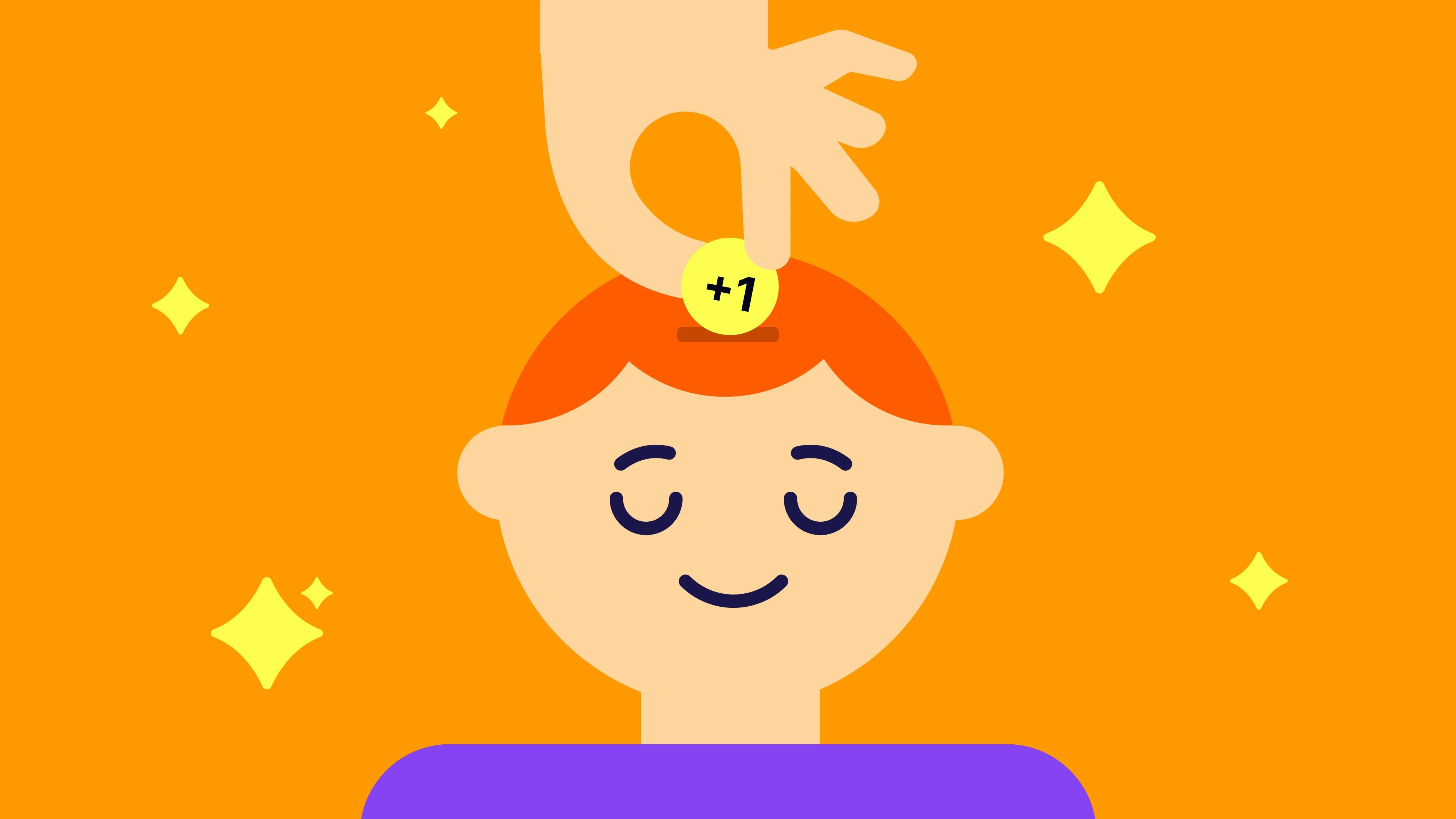
To supercharge your long-term memory, consider the following techniques:
Memory palaces: This mnemonic device was created by ancient Romans and Greeks who practiced associating things they wanted to remember with specific physical locations. Benedict Cumberbatch in 'Sherlock' showed how to create a mental map of your memories and retrieve them anytime.
Storytelling: Turning information into a story can help you remember it better as it forms strong connections with the information you're learning.
Visual association: Visual stimuli or visualization (forming mental images to aid in comprehension, memory enhancement, and motivation) boost learning and recalling information. If you struggle to memorize names, try associating them with an image that reminds you of the name, like Mike and microphone.
Finding a mentor: A mentor is a valuable guide with expertise in a particular field. They can offer crucial advice and insights to help you avoid potential pitfalls.
When searching for a mentor, start by clarifying your objectives and requirements. Look for someone with relevant skills and knowledge who can support and guide you. Consider seeking out potential mentors among your colleagues or friends. Additionally, explore professional networks and platforms such as LinkedIn, where you can connect with people who are open to sharing their experiences.
Debunking common myths about learning
One common misconception about learning is that its quality depends on money spent. In real life, the impact of education is determined by how effectively funds are used, not just the amount paid. There is also a suggestion that individual classes are always better than group classes.
While many people believe that smaller class sizes result in better outcomes, there is no universally recognized evidence of their effectiveness for all, and it may sometimes entail additional spending.
Another misconception worth addressing is the belief that innate talent primarily determines academic success. In reality, our educational achievements are shaped by persistent effort rather than by innate skills. Just like a diamond needs to be processed to shine, our diligence is crucial in achieving success and high results.
Finally, one of the most commonly believed myths suggests that increasing study time improves performance. While maintaining high educational standards and increasing study hours can enhance results, enriching education quality is the key to significantly better outcomes. Often, extra hours aren't even necessary.
The mistake of multitasking in learning
When you try to juggle multiple tasks at once, your brain rapidly switches attention from one task to another rather than performing them simultaneously. This constant shifting of focus results in a loss of processing time and cognitive effort with each transition. As a result, errors are more likely to occur, and the time needed to complete each task may be prolonged.
"Distributed practice" is an alternative that the Headway Team recommends. It is commonly known as "spacing" or "spaced practice" and is highly effective for improving training, education, and athletic performance. This approach involves spreading out study or practice sessions over time rather than cramming everything into a single session. The benefits of distributed practice are wide-ranging, from enhancing memory retention for both verbal and visual information to facilitating the acquisition of motor skills and mastering complex educational materials.
Resources to keep up with quick learning
To support your learning journey, don't hesitate to refer to supportive learning and teaching methods, such as digitized tutorials, YouTube videos, and educational podcasts. Your study sessions might become more engaging if you divide everything into manageable chunks. In his book 'Limitless,' Jim Kwik insists that we are the ones who should determine our learning limits, not someone else:
"If you are struggling to reach a goal in any area, you must first ask: Where is the limit? Most likely, you’re experiencing a limit in your mindset, motivation, or methods—which means that it’s not a personal shortcoming or failure pointing to any perceived lack of ability."

The author offers a method for learning quickly called FASTER, which stands for Forget, Act, State, Teach, Enter, and Review. Kwik suggests that this approach can enhance your learning speed and quality and that acquiring the skill of effective learning is a power that can unleash your capabilities.
Here's an explanation of what each letter in the acronym represents:
F — Forget: According to Kwik, people stop learning quickly if "they feel like their cup is already full," meaning that being open to new information can lead to better learning.
A — Active: Our brains don't learn simply through passive consumption but through active engagement and participation.
S — State: Your state reflects your mental and physical well-being at any given moment. It also encapsulates the emotions and feelings you are experiencing at that specific time. When information is intertwined with emotions, it has a greater chance of becoming a long-term memory.
T — Teach: Teaching something allows for a deeper understanding and retention of the material, as it requires a thorough comprehension to teach others effectively.
E — Enter: Consider entering all your plans and appointments into your personal calendar to ensure discipline in your personal growth and development.
R — Review: Recall everything you learned with spaced repetition. Your brain assigns a value to the reviewed studies, getting your mind ready for what's to come.
Continue working on your quick learning strategy with Headway
Implementing these life hacks can accelerate your learning process and help you continuously master new concepts and skills. This, in turn, will enhance your overall productivity and assist you in reaching your objectives.
The critical factor is maintaining a systematic and time-wise approach to your educational endeavors. To help you on this journey, the Headway Team offers concise and easy-to-read book summaries. They may help you acquaint yourself with the authors' in-depth insights in a shorter amount of time, like 'Deep Work' by Cal Newport, where the author offers the opportunity to master a "deep work" concept. From Newport's perspective, deep work entails single-tasking and intense focus while completing the job. As a result, performance and overall productivity are upgraded.




